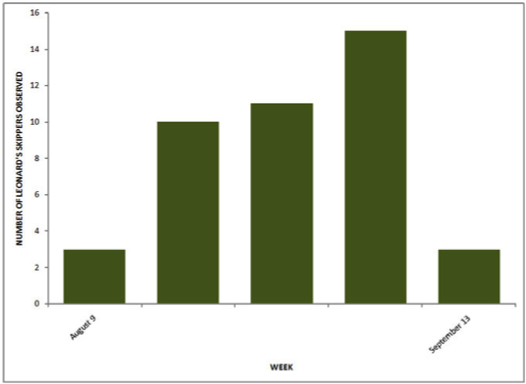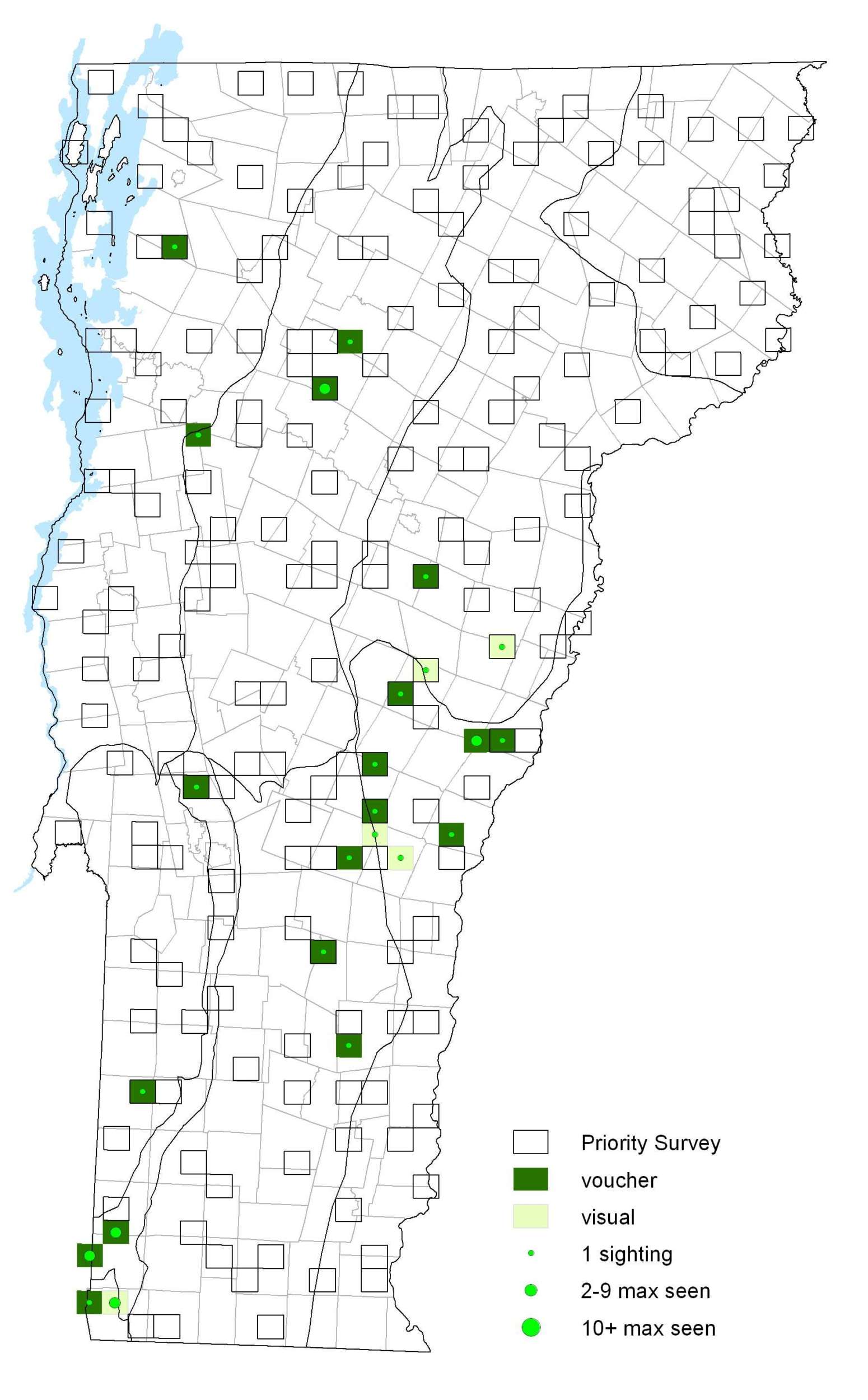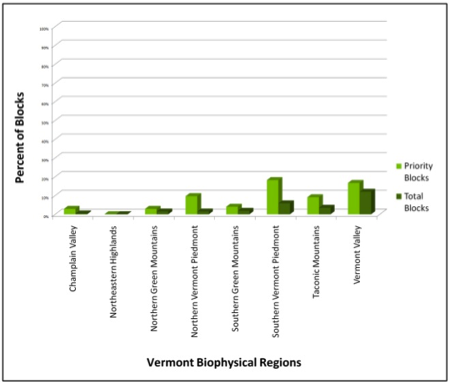|
Resident Conservation Status North American Range |
As summer in Vermont comes to a close and the flight period of many of our most common butterflies is ending, Leonard’s Skipper is just emerging for the season finale in mid-August. A medium sized skipper with no markings to confuse it with other species, this butterfly’s flight time also helps to differentiate it from potential lookalikes. There are three subspecies (H.l. leonardus, H.l. montanus and H. l. pawnee), with leonardus found in our region. H. l. montanus exists only within a small range in Colorado and is critically endangered. Males perch or patrol near nectar plants to find receptive females. Eggs are scattered on or near the host plants. Caterpillars feed on leaves and live in shelters of tied leaves. First instar caterpillars overwinter.
Identification
Includes three dissimilar subspecies; all have yellow inside the male’s forewing stigma. Leonard’s Skipper (H. l. leonardus) upperside is red-orange with wide black borders. Underside of hindwing is brick red with a band of white, cream, or yellow spots.
Flight
Leonard’s Skipper has a very short and a very late flight period for a hesperid, lasting from mid-August until mid-September during VBS. In the South, they fly later, beginning in September and flying until the middle of October. Extreme dates: 9 August 2004 in Washington (A. Aversa) and 13 September 2003 in Sandgate (K. Hemeon).
Distribution and Habitat
During VBS it was found outside of the northeastern third of Vermont, where it is replaced by the Common Branded Skipper. Populations may be declining in the east. Their habitat is variable, but they tend to favor open grassy areas including native prairies, fields, and meadows. Host plants are various perennial grasses including Little Bluestem (Andropogon scoparius), and Bent Grass (Agrostis). Adults’ favorite nectar source is Blazing Star (Liatris punctata), but they will also nectar from thistles (Carduus), asters (Aster), and others.







